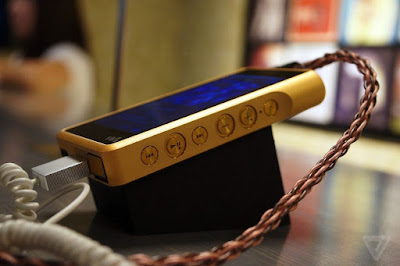On Wednesday afternoon — just a few short hours after
Apple will be making some big announcements of its own — Sony will be
holding what it’s calling a "PlayStation meeting" in New York. The
company says that it will provide "an update on the PlayStation business
and PS4," and it’s widely expected to announce two new versions of the
PS4, much like Microsoft did with the Xbox One at E3 this year: a
slimmed-down variant of the current console, followed by a tease of a
much bigger update.
Though nothing is official just yet, and there will
likely be a few surprises, a number of recent leaks and reports give us a
pretty solid idea of what will be announced onstage. The Verge will be reporting on the event live from New York, but for now, you can catch up on exactly what to expect below.
Sony has already admitted that the much rumored PS4 Neo — a more powerful version of the console — is in the works. Speaking to the Financial Times ahead of E3,
Andrew House, CEO of Sony Interactive Entertainment, explained that Neo
would be a more powerful version of the console, with faster
processors, improved graphical capabilities, and support for 4K
resolution.
That said, it’s not quite a leap to a new generation —
the Neo and PS4 are expected to play all of the same games. "It is
intended to sit alongside and complement the standard PS4," House
explained. "We will be selling both [versions] through the life cycle."
Instead of ushering in a new generation of game
experiences, Neo is meant to appeal to early adopters of tech like 4K
and virtual reality. With native 4K support, games will look much better
if you happen to have a very expensive 4K TV, while the improved
processing power will likely make PlayStation VR games both look better and
run smoother compared to the standard PS4. PSVR launches in October,
and will support all versions of the PS4. It’s unclear when exactly Neo
will launch, but it’s likely to be after PSVR hits store shelves, and
probably in 2017.
The upgrades sound a lot like Project Scorpio,
Microsoft’s impending upgrade to the Xbox One that adds similar
features and will be launching next fall. Scorpio still remains
mysterious, however; we don’t know what it looks like or how much it
will cost. Hopefully Sony will unveil a bit more of its new console than
Microsoft did.
A second, slimmer PS4
Like every PlayStation before it, the PS4 will likely be
getting a good deal smaller very soon. And this isn’t just idle gossip:
we’ve already seen what looks like the soon-to-be-announced PS4 slim. Images of the device first surfaced in late August, thanks to a posting on auction site Gumtree, and not long after videos began to appear online showing the device in action. (Though most were subsequently removed.
As is the case with most slim redesigns, the new PS4
doesn’t appear to be a massive change. It’s smaller and has rounded
corners, but otherwise maintains the same angular look as its
predecessor. The big question is whether it will have some added
functionality to go along with its new look. With the Xbox One S,
Microsoft not only made the console smaller and sleeker, but also added
new features like support for 4K video. It even removed the pesky,
bulky power supply.
Unfortunately, looks aside, early reports peg the PS4
slim as being largely the same as the base PS4 — so likely not a console
that will entice you to upgrade.
A (slightly) upgraded DualShock 4
Alongside the leaked images and video of the slim PS4, we’ve also seen what looks to be a new version of the DualShock 4 controller.
Though "new" might be overselling it. Based on what we’ve seen, the
controller is identical to the previous DualShock 4, but with one slight
difference: the colorful light bar is now visible from the front, so
you won’t have to turn it around to see lights flash when you’re being
chased by police in Grand Theft Auto.
It’s possible that there are some other changes under the
hood, such as an improved wireless range, but for the most part, this
looks like a slight tweak to an already solid gamepad.
A few new games
The best way to show off gaming hardware is with, you
guessed it, games. And so there’s a good chance that Sony will have a
handful of new, visually impressive titles that help showcase how good
4K games can really look. Just as likely is a new game or two that
highlight how much better VR games run on Neo. Just what those games
might be is anybody’s guess, but Sony has a huge range of exclusive
franchises that could get the job done. New Ape Escape anyone?




































